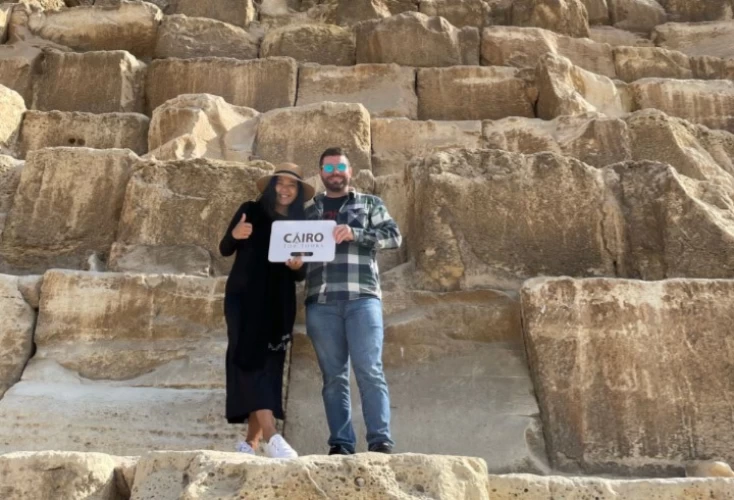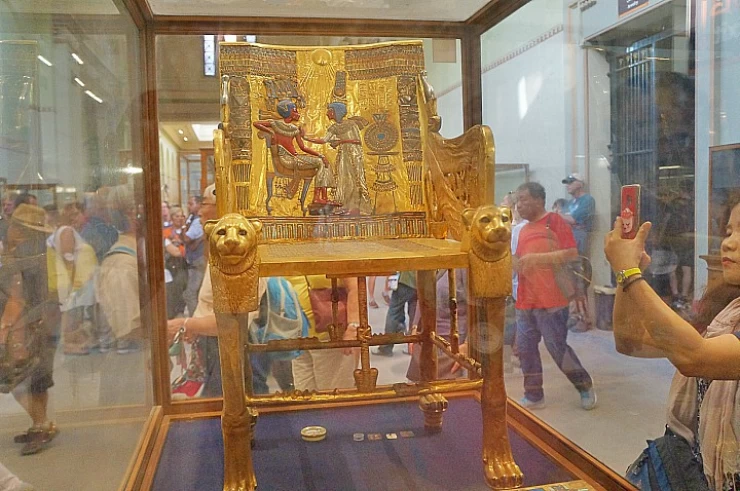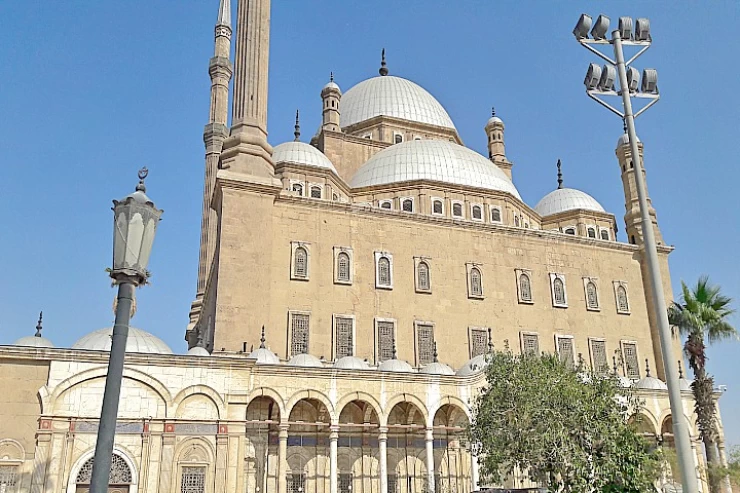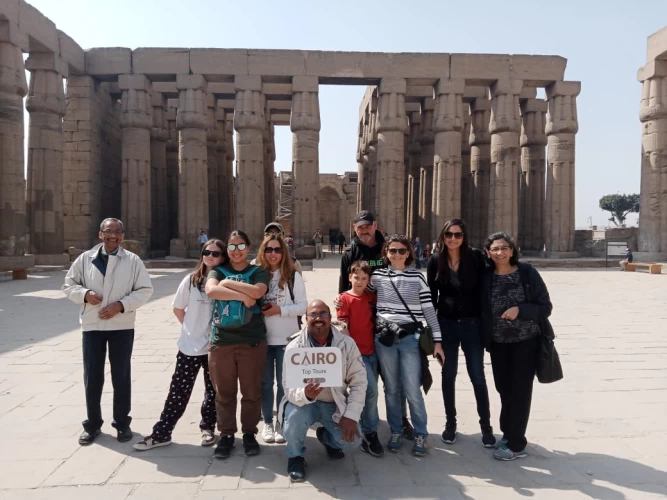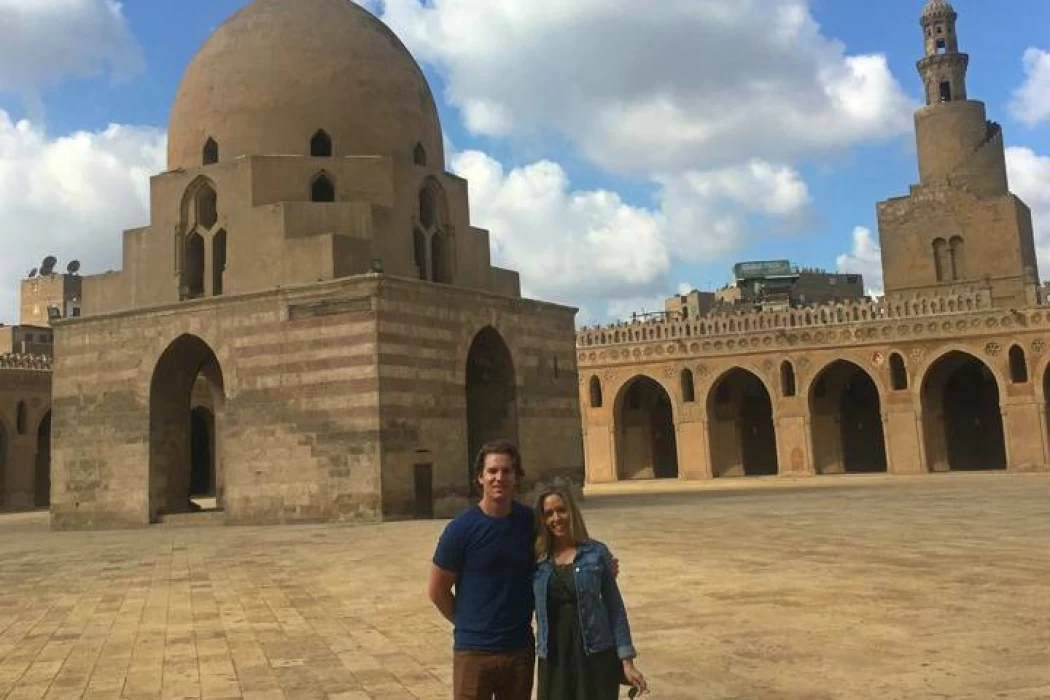
艾哈迈德-伊本-图伦清真寺
揭开开罗艾哈迈德*伊本*图伦清真寺永恒之美
伊本*图伦清真寺是开罗市着名的伊斯兰建筑之一,也是埃及最古老的清真寺之一。 这座建于数千年前的清真寺一直是太空爱好者的目的地-以及奇异的建筑-充满开放空间,高大的天花板和迷人的螺旋形尖塔。 这座清真寺建于公元879-880年,由图鲁尼王朝的始作俑者艾哈迈德*伊本*图伦(Ahmad Ibn Tulun)建造,即使经过一千多年,它仍然是伊斯兰传统和历史中的艺术典范。 参与这个奇妙的网站就像参与历史。 这是一个从城市的混乱中解脱出来的,因为人们可以欣赏到这个国家的一个核心方面,那就是埃及。
艾哈迈德*伊本*图伦清真寺的起源
删除了其中许多。 建造清真寺的命令是由土耳其裔总督艾哈迈德*伊本*图伦(Ahmad Ibn Tulun)下达的,他在868-884年阿巴斯哈里发时期监督埃及和叙利亚部分地区。 伊本*图伦上台的原因之一是为了在巴格达建立一个不受阿拔斯王朝控制的政府和文化中心,因此他计划建造Al-Qata-I城作为他的据点。 现在的人行道类似于这个新市镇,是在公元876-879年间铺设的,其中有一座教堂,旨在象征他的统治。
与开罗发现的其他清真寺不同,艾哈迈德*伊本*图伦清真寺坐落在它的大院里。 这使得清真寺达到了某种雄伟的宁静,类似于美丽但贫瘠的沙漠风景,激发了它的设计。 清真寺的建造采用了当地的原材料、砖和石膏,透视了清真寺独特的吸引力。
艾哈迈德*伊本*图伦清真寺的建筑亮点
Ahmad Ibn Tulun清真寺的复杂细节和许多独特的特征不容易被忽视。 清真寺的建筑布局类似于传统的柱式清真寺的设计,有一个大的开放庭院,两侧有几排拱门和礼拜区上方的天花板区域。 虽然清真寺的形式看起来很简单,但事实上,它非常明智,非常适合环境。 这是因为它有室内空间,可以防止刺眼的阳光,进行一些安静的反射或祈祷。
庭院和沐浴喷泉
清真寺的亮点之一是一个巨大的开放区域,作为一个庭院,四面约92米长,为会众提供了大量空间。 中心是一个帆,或沐浴喷泉,建于马穆鲁克时代,使它从其他清真寺中脱颖而出。 优雅的曲线和喷泉的圆顶与清真寺的结构和谐一致,对其建造背后的理由毫无抵抗力。
地下祈祷厅
这种建筑风格的一系列大型砖熊和马蹄形拱门支撑着壁纸。 这些码头用复杂的石膏装饰,这是这个国家最早的例子之一。 由于引入了石膏雕刻,几种复杂的设计,如几何和植物,也美化了同样鲜明的内部,是可能的。
螺旋尖塔
也许Ahmad Ibn Tulun清真寺最独特的特征是其独特的螺旋尖塔。 与开罗发现的其他宣礼塔不同,这座宣礼塔的灵感来自伊拉克萨马拉大清真寺的着名宣礼塔,艾哈迈德*伊本*图伦(Ahmad Ibn Tulun)童年时期居住在那里。 尖塔的螺旋结构使宣礼员能够在骑马时上升到顶点。 人们还可以爬上尖塔,在阳光明媚的下午欣赏开罗及其景点的360度全景,如着名的吉萨金字塔。
有盖的拱廊
庭院周围是有盖的拱廊,天花板设计复杂,由木雕和石膏装饰制成。 这些拱廊创造了一些阴影区域,供人们崇拜或在沉默中清醒,其中有小窗户"切割",让光线轻轻地涌入,营造出一种宁静的隐居感。 清真寺的建筑保持在最低限度,因此它鼓励人们取悦礼拜者的祈祷而不是其他活动。
灰泥装饰
灰泥的广泛使用,在清真寺或其建筑中表现突出,当它有一个方面有点奇特时,因为它是埃及建筑的古老建筑材料。 粉刷的照片甚至以几何形状,植物设计和Kufic字体的形式制作,有效地提升了沉闷的砖墙。 这些装饰元素是埃及最早发现的伊斯兰艺术的一些例子,并显示了图鲁尼王朝对阿巴斯艺术的改编。
历史意义与保存
开罗在很多方面都发生了变化,艾哈迈德*伊本*图伦清真寺一直是城市内几个此类事件的观察者。 随着图鲁尼德王朝的崩溃,对清真寺的照顾很少,Al Qatta地区大部分被夷为平地。 在这种情况下,清真寺也幸免于破坏,这要归功于其强大的材料和后来的领导人的高度尊重。
马穆鲁克苏丹苏丹拉金(Sultan Lajin)被认为在政变期间隐藏在清真寺中,负责十三世纪的修复工程。 他承诺,他将在救援后修复寺庙,他这样做了。 这项修复工作是通过增加洗涤喷泉和一些化妆品翻新工程完成的。 众所周知,自那时以来,清真寺遭受了其他修复工程,这使得该遗址的建筑和历史保护成为可能。
目前,清真寺由埃及古物部管理,该部也将其列为历史古迹。 它仍然活跃在崇拜方面,也是一个迷人的地方参观,由于其吸引人的特点和丰富的历史。
体验艾哈迈德*伊本*图伦清真寺
Ahmad Ibn Tulun清真寺是您参观的精神和美观充实的地方之一。 与开罗一些更多的旅游胜地不同,清真寺的人潮相对较少,使其成为冥想的完美中心。 漫步在广阔的庭院和有盖的人行道上,人们学会欣赏早期伊斯兰拱门的极简主义之美。
优化您的旅游的几点建议:
注意最佳时机
在任何人想要的任何时间都可以进入迈阿密的清真寺。 然而,由于良好的照明以及一天的凉爽,早上或下午晚些时候比这样的访问更好。 在一天的这个时候温暖的金色光芒带出了清真寺复杂的砖和灰泥工作。
从塔上欣赏美景
如果需要额外的费用,游客也可以登上螺旋塔,更好地看到整个开罗市。 坡道足够宽,使攀登相当容易,从顶部得到的观点是如此值得的麻烦。 在一个公平的日子里,可以看到吉萨金字塔远远落后,开罗城堡和伊斯兰开罗附近也是如此。
抓住细微差别
在穿过清真寺时,不要忘记观察精细的细节,如美丽的灰泥作品和独特的Kufic铭文。 这些特征揭示了9世纪的艺术和工艺传统,这些风格是文化互动的结果,影响了埃及,特别是在图卢尼德时期。
了解环境
除了盖耶-安德森博物馆(Gayer-Anderson Museum)位于一座美丽的17世纪老建筑中,距离清真寺仅一箭之遥,其他景点还提供该地区的历史视角。 清真寺有一个博物馆,补充了其丰富的历史,并提供了解开罗城市伊斯兰教复杂细节的方法。
保持体面的服装
由于清真寺是一个礼拜场所,游客和游客被要求穿着得体和谦虚。 女人应该不厌其烦地背着围巾遮住头;而且,男人和女人应该穿遮住胳膊和腿的衣服。
艾哈迈德*伊本*图伦清真寺:活生生的遗产
位于开罗市中心的艾哈迈德*伊本*图伦清真寺不是一座孤立的建筑,而是该市伊斯兰建筑的核心元素。 它永恒的吸引力和宁静的氛围让人以历史和精神的方式欣赏这个地方。 近十二个世纪以来,这个祈祷的地方一直是信仰,耐力和文化愿望的灯塔。 在埃及令人耳目一新的历史遗迹中,还有一个原因,那就是永远不会引起所有走过其令人惊叹的拱门的人的钦佩。
无论你是一个历史爱好者,艺术鉴赏家和21世纪的文化,甚至是一个随机的旅行者寻找特别的东西,艾哈迈德*伊本*图伦清真寺带来平静和丰富的经验。 它的精致设计和它所拥有的富裕代表了伊斯兰艺术和建筑的早期形式;因此,每个访问城市的游客都希望将这一景象纳入他或她的行程。
The Mosque of Ibn Tulun is one of the prominent Islamic structures in the city of Cairo and is among the oldest mosques found in the country of Egypt. The mosque, which was built thousands of years ago, has been the destination for space lovers—and bizarre architecture-filled open space, tall ceilings, and the charming spiral-shaped minaret. The mosque was constructed in 879–880 CE by Ahmad Ibn Tulun, the initiator of the Tulunid dynasty, and even after more than a millennium, it remains an example of art in the Islamic tradition and history. Engaging with this fantastic site is like engaging with history. It is a reprieve from the city’s chaos as one gets to appreciate a central aspect of the nation, which is Egypt.
Erased many of them. The order for the construction of the mosque was given by Ahmad Ibn Tulun, a governor of Turkic origin who oversaw Egypt and part of Syria during the Abbasid Caliphate from 868–884. One of the reasons that Ibn Tulun came into power was to establish a government and cultural center that was not controlled by the Abbasids in Baghdad, and so he planned the construction of al-Qata-I city as his stronghold. The pavement of the present resembling this new town was laid in the years 876–879 AD with a church that was designed to symbolize his rule.
Unlike any other mosque found in Cairo, which is often packed with other buildings, Ahmad Ibn Tulun Mosque sits in its large compound. This allows the mosque to achieve a certain majestic serenity akin to the beautiful but barren desert scenery that inspired its design. The construction of the mosque employs local raw materials, brick, and plaster, putting into perspective the distinctive appeal of the mosque.
The intricate details and the many distinctive features of the Ahmad Ibn Tulun Mosque are not something that can be easily overlooked. The mosque’s architectural layout is similar to the traditional design of a hypostyle mosque with a large open courtyard flanked by several rows of arches and a ceilinged region above the area of worship. While the form of the mosque may seem simple, it is, in fact, very sensible and well-suited to the environment. This is because it has indoor spaces that are protected from the harsh sun for some quiet reflection or prayers.
The Courtyard and Ablution Fountain
Among the highlights of the mosque is an enormous open area that serves as a courtyard that is about 92 meters long on all sides and allows a great deal of space for the congregation. At the center is a sail, or an ablution fountain, built during the Mamluk era, making it stand out from the other mosques. The elegant curves and the dome of the fountain are in harmony with the structure of the mosque, providing no resistance to the rationale behind its construction.
The Hypostyle Prayer Hall
A series of large brick bears and horseshoe arches characteristic of this architectural style support the wallpaper. These piers are embellished with complex plasterwork, which is one of the earliest examples of such in this country. As a result of introducing plaster carving, several kinds of intricate designs, like geometry and plants, which also beautify the same stark interior, were possible.
The spiral minaret
Perhaps the most distinct attribute of the Ahmad Ibn Tulun Mosque is its distinctive spiral minaret. Unlike other minarets found in Cairo, this one takes inspiration from the well-known minaret of the Great Mosque of Samarra in Iraq, where Ahmad Ibn Tulun lived during a period of his childhood. The helical structure of the minaret enabled the muezzin to ascend to the apex while riding on a horse. One can also climb the minaret and enjoy a 360-degree view of Cairo and its attractions, such as the famous pyramids of Giza, on a bright sunny afternoon.
The covered arcades
Encompassing the courtyard are covered arcades, which have intricately designed ceilings made of wooden carvings as well as plaster decorations. These arcades create some shaded areas for worship or sobering up in silence with small windows ‘cut’ in them that allow light to flood in gently, creating a serene sense of seclusion. The architecture of the mosque is kept to the minimum, and therefore it encourages the pleasing of the worshippers’ prayers rather than other activities.
Stucco Adornments
The extensive use of stucco, which is outstanding amongst the mosque or its architecture, came when it has an aspect somewhat peculiar as it was an ancient construction material for Egyptian construction. Pictures of the stucco were even made in form of geometric shapes, plant designs, and Kufic fonts that effectively raised the dull brick walls. These decorative elements are some of the earliest examples of Islamic art to be found in Egypt and show the adaptation of Abbasid art by the Tulunid Dynasty.
Cairo has changed in a lot of ways, and the Ahmad Ibn Tulun Mosque has been an observer of several such events within the city. With the collapse of the Tulunid Dynasty, there was little care for the mosque, and the area of Al Qatta was mostly flattened. The mosque in this case also survived the destruction, thanks to its strong materials and the high esteem it earned from the later leaders.
Sultan Lajin, the Mamluk sultan who is believed to have hidden in the mosque during the coup, was responsible for the repair works that came in the thirteenth century. He promised that he would repair the temple after the rescue and he did so. This restoration work was done with the addition of the washing fountain and some cosmetic renovation works. The mosque is known to have suffered other restoration works since then, which has made it possible for the architectural and historic conservation of the site.
Currently, the mosque is administered by the Egyptian Ministry of Antiquities, which has also classified it as a historical monument. It is still active in the aspect of worship and also serves as a fascinating place to visit due to its attractive features and rich history.
Experiencing the Ahmad Ibn Tulun Mosque
The Ahmad Ibn Tulun Mosque is one of those places you visit that is spiritually and aesthetically fulfilling. Unlike some of the more tourist-filled places in Cairo, the mosque is relatively less frequented, making it a perfect center for meditation. Wandering about the expansive courtyards and covered walkways, one learns to appreciate the beauty in the minimalism of early Islamic arches.
A few pointers for optimizing your tour:
Be Aware Of The Optimal Timing
It’s possible to access the mosque in Miami at any time of day anyone wants. However, the morning or the late afternoon is preferable to such a visit due to the good lighting as well as the coolness of the day. The warm golden light at this time of day brings out the intricate brick and stucco work of the mosque.







